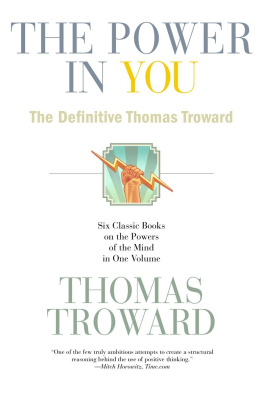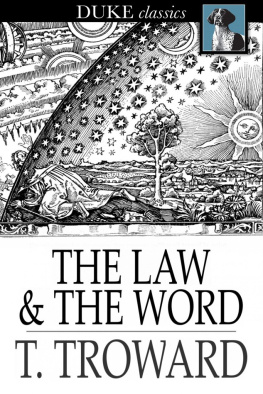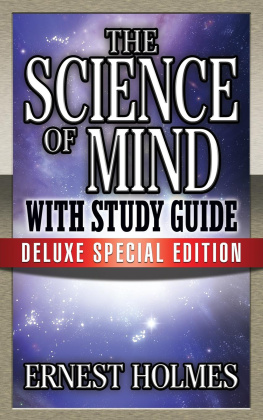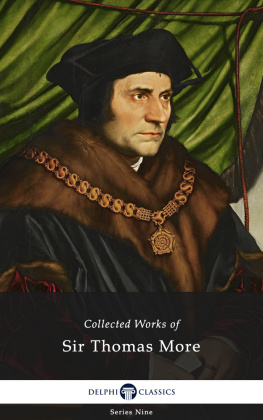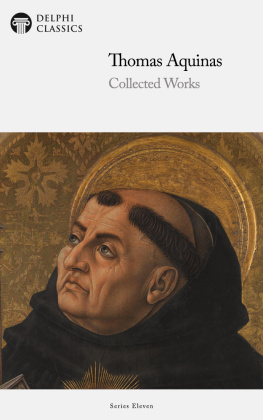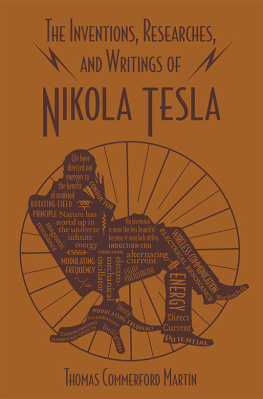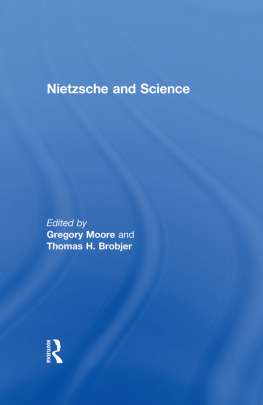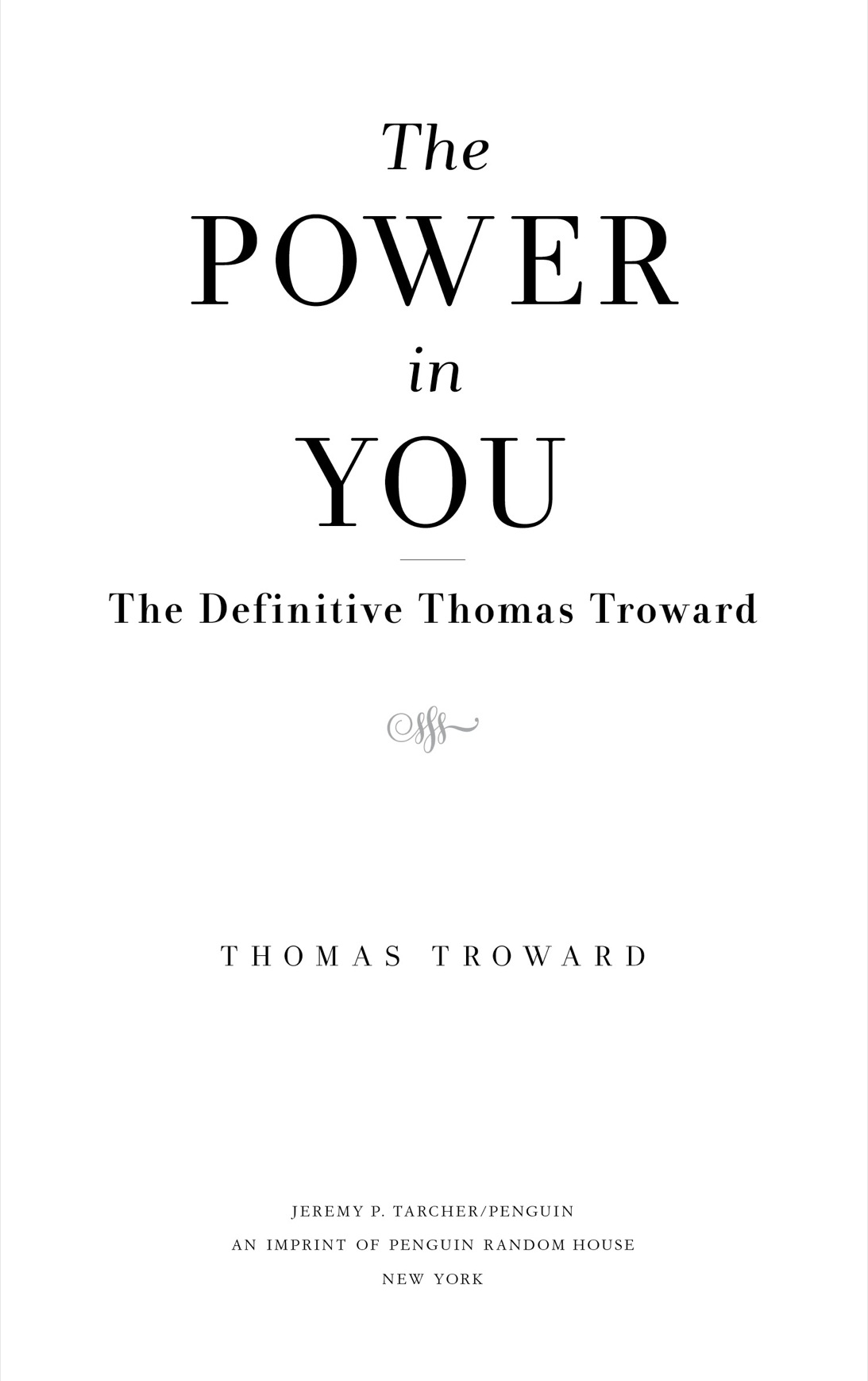
JEREMY P. TARCHER/PENGUIN
An imprint of Penguin Random House LLC
375 Hudson Street
New York, New York 10014

The Edinburgh Lectures on Mental Science was originally published 1904, expanded 1909.
The Dor Lectures on Mental Science was originally published 1909.
The Creative Process in the Individual was originally published 1910, expanded 1915.
Bible Mystery and Bible Meaning was originally published 1913.
The Law and the Word was originally published 1917 (posthumous).
The Hidden Power was originally published 1921 (posthumous).
Trowards Teachings in Condensed Form was originally published 1958 in My Personal Reflections of Thomas Troward (Booklet Three) by Harry Gaze.
These volumes first collected by Jeremy P. Tarcher/Penguin in 2015.
Most Tarcher/Penguin books are available at special quantity discounts for bulk purchase for sales promotions, premiums, fund-raising, and educational needs. Special books or book excerpts also can be created to fit specific needs. For details, write: SpecialMarkets@penguinrandomhouse.com.
Library of Congress Cataloging-in-Publication Data
Troward, T. (Thomas), 18471916.
[Works. Selections]
The power in you : the definitive Thomas Troward / Thomas Troward.
p. cm.
ISBN 978-0-698-19516-5
1. New Thought. I. Title.
BF639.T746 2015 2015002865
299'.93dc23
This volume reproduces these works essentially as they appeared in their original editions. Except for adjustments that bring the text in line with contemporary typographic standards, the publisher has mostly retained the original spelling, usage, and style of the author. As these works were written in the first half of the twentieth century, they occasionally include an antiquated reference or word choice. For the purposes of historical accuracy, the publisher has left these intact, other than in cases of obvious error.
Version_1

CONTENTS
T HE E DINBURGH L ECTURES ON M ENTAL S CIENCE

1904, expanded 1909
The Writer
Affectionately Dedicates
This Little Volume
To
His Wife

CONTENTS

FOREWORD
T HIS BOOK CONTAINS the substance of a course of lectures recently given by the writer in the Queen Street Hall, Edinburgh. Its purpose is to indicate the Natural Principles governing the relation between Mental Action and Material Conditions, and thus to afford the student an intelligible starting-point for the practical study of the subject.
T. T.
March, 1904.
I

SPIRIT AND MATTER
I N COMMENCING a course of lectures on Mental Science, it is somewhat difficult for the lecturer to fix upon the best method of opening the subject. It can be approached from many sides, each with some peculiar advantage of its own; but, after careful deliberation, it appears to me that, for the purpose of the present course, no better starting-point could be selected than the relation between Spirit and Matter. I select this starting-point because the distinctionor what we believe to be suchbetween them is one with which we are so familiar that I can safely assume its recognition by everybody; and I may, therefore, at once state this distinction by using the adjectives which we habitually apply as expressing the natural opposition between the twoliving spirit and dead matter. These terms express our current impression of the opposition between spirit and matter with sufficient accuracy, and considered only from the point of view of outward appearances this impression is no doubt correct. The general consensus of mankind is right in trusting the evidence of our senses, and any system which tells us that we are not to do so will never obtain a permanent footing in a sane and healthy community. There is nothing wrong in the evidence conveyed to a healthy mind by the senses of a healthy body, but the point where error creeps in is when we come to judge of the meaning of this testimony. We are accustomed to judge only by external appearances and by certain limited significances which we attach to words; but when we begin to enquire into the real meaning of our words and to analyse the causes which give rise to the appearances, we find our old notions gradually falling off from us, until at last we wake up to the fact that we are living in an entirely different world to that we formerly recognized. The old limited mode of thought has imperceptibly slipped away, and we discover that we have stepped out into a new order of things where all is liberty and life. This is the work of an enlightened intelligence resulting from persistent determination to discover what truth really is irrespective of any preconceived notions from whatever source derived, the determination to think honestly for ourselves instead of endeavouring to get our thinking done for us. Let us then commence by enquiring what we really mean by the livingness which we attribute to spirit and the deadness which we attribute to matter.
At first we may be disposed to say that livingness consists in the power of motion and deadness in its absence; but a little enquiry into the most recent researches of science will soon show us that this distinction does not go deep enough. It is now one of the fully-established facts of physical science that no atom of what we call dead matter is without motion. On the table before me lies a solid lump of steel, but in the light of up-to-date science I know that the atoms of that seemingly inert mass are vibrating with the most intense energy, continually dashing hither and thither, impinging upon and rebounding from one another, or circling round like miniature solar systems, with a ceaseless rapidity whose complex activity is enough to bewilder the imagination. The mass, as a mass, may lie inert upon the table; but so far from being destitute of the element of motion it is the abode of the never-tiring energy moving the particles with a swiftness to which the speed of an express train is as nothing. It is, therefore, not the mere fact of motion that is at the root of the distinction which we draw instinctively between spirit and matter; we must go deeper than that. The solution of the problem will never be found by comparing Life with what we call deadness, and the reason for this will become apparent later on; but the true key is to be found by comparing one degree of livingness with another. There is, of course, one sense in which the quality of livingness does not admit of degrees; but there is another sense in which it is entirely a question of degree. We have no doubt as to the livingness of a plant, but we realize that it is something very different from the livingness of an animal. Again, what average boy would not prefer a fox-terrier to a goldfish for a pet? Or, again, why is it that the boy himself is an advance upon the dog? The plant, the fish, the dog, and the boy are all equally

